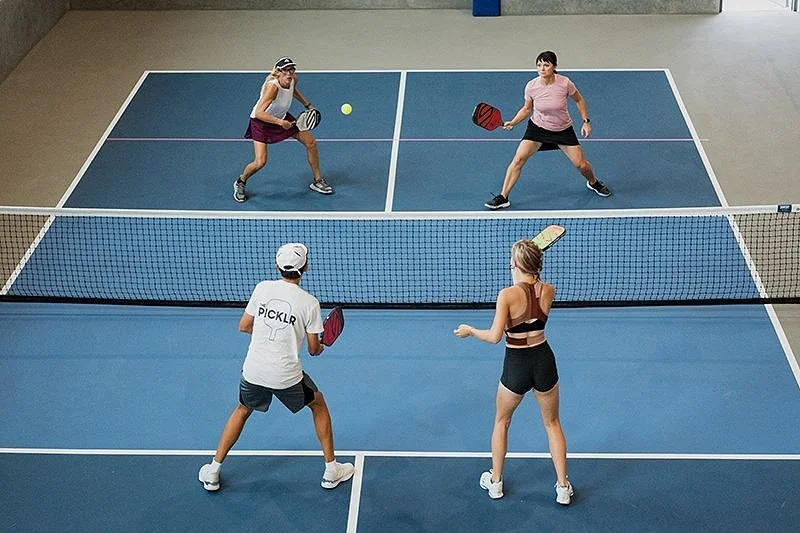Mastering The Soft Game: How To Win With Patience And Precision
In a sport known for fast-paced rallies and explosive overheads, the soft game in pickleball is often the overlooked art form that quietly wins matches. While big drives and quick hands might grab the spotlight, it’s the players who can control the tempo—soften the pace, reset the rally, and wait for the right moment—who consistently come out on top.
So, what exactly is the soft game? And why is mastering it essential if you’re serious about improving your doubles play? Let’s break it down.
Source: PayPal Newsroom
What Is The Soft Game?
The soft game in pickleball refers to the slow, controlled shots—typically dinks, resets, and drop shots—that are used to neutralize power, disrupt rhythm, and build strategic pressure at the net. It’s less about winning outright and more about creating the conditions for your opponent to make the mistake.
It’s also about patience. And that’s exactly what makes it so effective.
Why The Soft Game Matters
When both teams are battling for dominance at the kitchen line, soft play is the glue that holds your strategy together. A well-placed dink can frustrate a banger. A controlled reset can bail you out of trouble. And a patient rally, built shot by shot, often ends in your favour—not because you went for glory, but because you outlasted them.
Here’s why it works:
It neutralizes power: Hard hitters lose their edge when they can’t generate pace.
It exposes impatience: Many players rush a putaway. Soft play forces errors.
It sets up the attack: A low, angled dink can create openings for a clean finish.
It wins long rallies: In elite doubles, most points are decided at the net. The soft game rules here.
Key Soft Game Skills To Master
1. Dinking with Purpose
Dinking isn’t just about tapping the ball over the net. It’s about ball placement, height control, and intent. Use cross-court dinks to force movement. Mix in straight dinks to keep your opponents honest. Keep it low over the net, and make them work for every ball.
2. Resetting Under Pressure
When you're pushed back or facing a flurry of speed-ups, the reset becomes your best friend. This means taking the pace off and dropping the ball softly into the kitchen, giving you time to regroup and reclaim control.
3. Soft Drops from Mid-Court or Baseline
Mastering the third-shot drop—or any drop from the transition zone—requires a soft touch and great timing. You want the ball to land softly in the kitchen with minimal bounce, ideally forcing your opponents to hit up.
4. Staying Calm and Patient
The soft game is a mental game. The temptation to speed it up can be overwhelming. But trust your soft hands. Stay steady. Let your opponents break the pattern—not you.
Common Mistakes In The Soft Game
Lifting the ball too high: This invites an easy attack. Focus on keeping the ball low and controlled.
Losing focus during long rallies: Patience is a skill. Don’t rush the point.
Predictable patterns: Vary your placements. Change direction. Use both feet to adjust and maintain balance.
Not using the soft game early enough: If you're always hitting hard, you're easier to read. Use the soft game as a setup, not just a backup.
How To Practice The Soft Game
To build your soft game, you don’t need power—you need reps, control, and intention.
Spend time at the kitchen line with a partner and focus on controlled dinks.
Play cooperative reset drills from the transition zone.
Challenge yourself to win a rally using only soft shots.
Watch how pro players—especially in MLP or PPA doubles—use patience to force errors.
The Soft Game Is The Smart Game
Winning with the soft game doesn’t mean playing passively. It means playing smart. It means knowing when to slow it down, how to stay in control, and when to pounce on the opportunity you’ve created through precision.
In pickleball, aggression has its place. But often, the most dangerous players are the ones who can do both—soften the game to their advantage and then strike with precision when the time is right.
So next time you’re on the court, don’t underestimate the power of a dink. It just might be your sharpest weapon.

